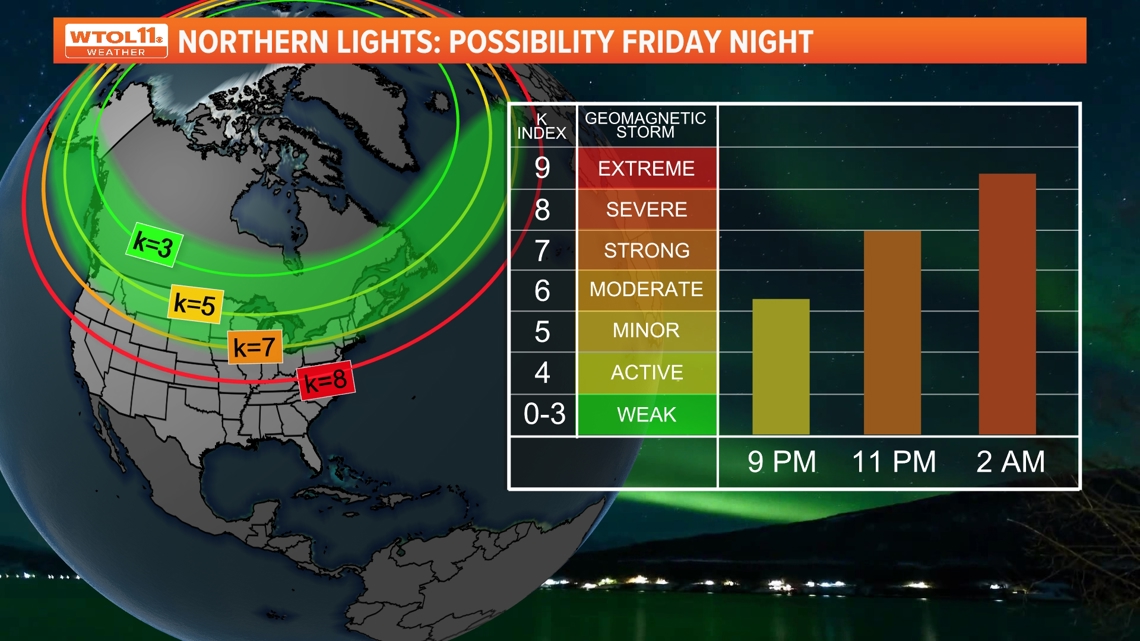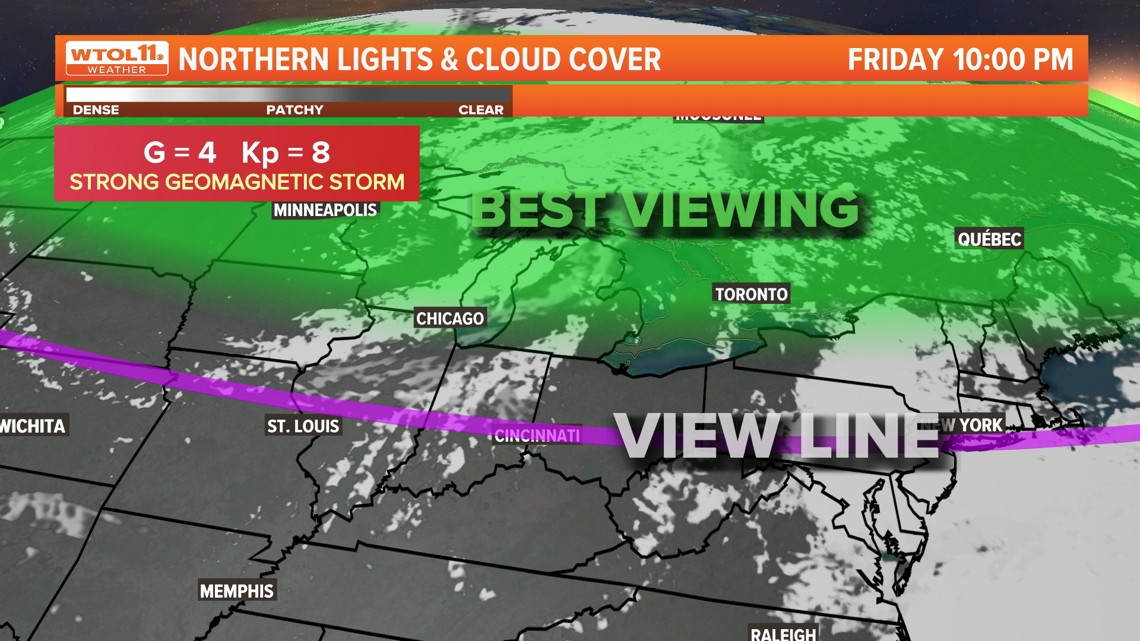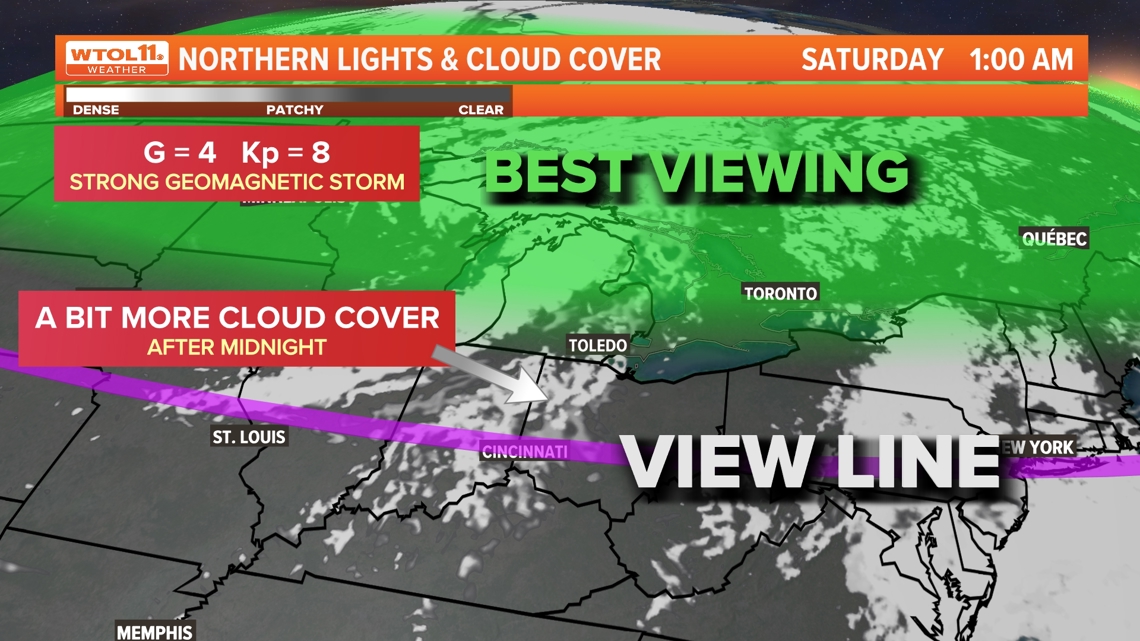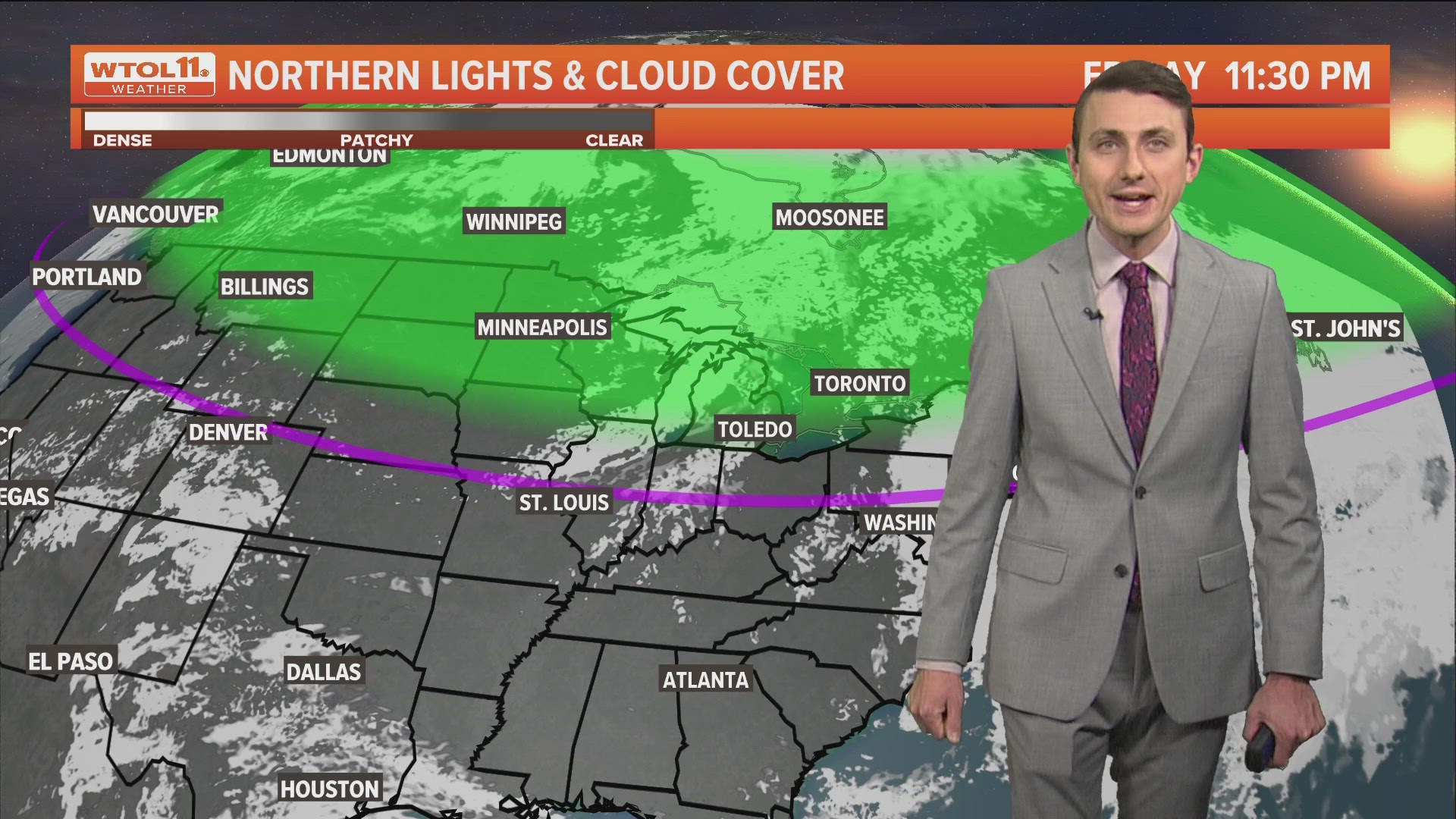TOLEDO, Ohio — Although the aurora borealis tends to be localized, with some exceptions, to certain times of the year and often more remote, northern parts of the country and continent, a strong geomagnetic storm Friday night could allow viewing of the phenomenon to Ohio and beyond, going potentially as far south as Tennessee.
According to the Space Weather Prediction Center (SWPC), which is a government agency operated out of the National Ocean and Atmospheric Administration and the National Weather Service, a geomagnetic storm will occur beginning Friday evening and lasting through early Saturday morning. This provides a strong likelihood of viewing the aurora borealis, or more colloquially known as the northern lights, in places - like Ohio - that typically do not see the event.
Timing
Friday's geomagnetic storm technically begins at 5 p.m. EDT, according to data from the SWPC, when a Kp index of 5.33 and a minor to moderate storm is expected. By 2 a.m. EDT Saturday, the Kp index will surge to 8.33, bringing a "severe or greater" geomagnetic storm. After that, the storm will remain strong through the early morning hours, before tapering off to a minor storm Saturday afternoon.
The aurora borealis can only be seen at night, however, so the ideal time to view it will likely come after sunset and through the early hours of Saturday. By midnight, the Kp will be at a 7 on the index. Peak viewing will occur at approximately 2 a.m.


Understanding the Kp index
According to the NOAA, geomagnetic storms are measured on an scale called the Kp Index, which measures aurora strength. The scale ranges from 0 to 9, the latter of which would represent a major geomagnetic storm, while the former represents calm activity. Any Kp reading 5 and above is considered a geomagnetic storm.
With Friday's storm peaking at an 8 on the Kp index, the storm will be among the strongest possible.
Location
How far south the aurora will stretch depends on the strength of the storm. At Kp 8, the NOAA is forecasting the aurora will be visible overhead as far south as Tennessee.
To view it, you may want to consider traveling somewhere with less light pollution. The further away from a major city you go, the brighter the aurora will appear.
Once you've arrived at your viewing area of choice, find an open field, or stand near a large body of water and face north.
Weather
Cloud cover will be minimal in the early parts of the night, meaning viewing will be possible, especially the further north you travel. At 10 p.m., when the KP index is at about a 7, very few clouds will appear across Ohio's skies.


By the early morning hours, around 1 a.m. and 2 a.m., more clouds will have moved in, making viewing less likely.


If you get to see the northern lights, be sure to send a pic to WTOL 11 using our mobile news and weather apps. Be sure to provide your name and the location where you took the picture.

